Best Things to Do in Nazca, Peru
Are you planning your amazing Peruvian adventures and wondering what there is to do in Nazca other than flying over the Nazca Lines, the mysterious geoglyphs of Peru? You’re in the right place then.
We want you to avoid our mistake of not looking a bit more thoroughly into Nazca before you plan out your own route. In hindsight, we probably would’ve booked an extra night there because, surprisingly, there are many interesting and unusual sites surrounding the city. Therefore, we’ve put together a list of places that you should consider visiting as well as the famous Nazca Lines.
If you’d like to see our Nazca adventures, then make sure to watch our Short on YouTube. For more Peru videos, check out the Peru Playlist on our YouTube channel.
Disclosure: This post may contain affiliate links, which means we may receive a small commission if you click a link and purchase something. Clicking these links won’t cost you anything, but it will help us to keep this site up and running! Learn more about our affiliate policy.
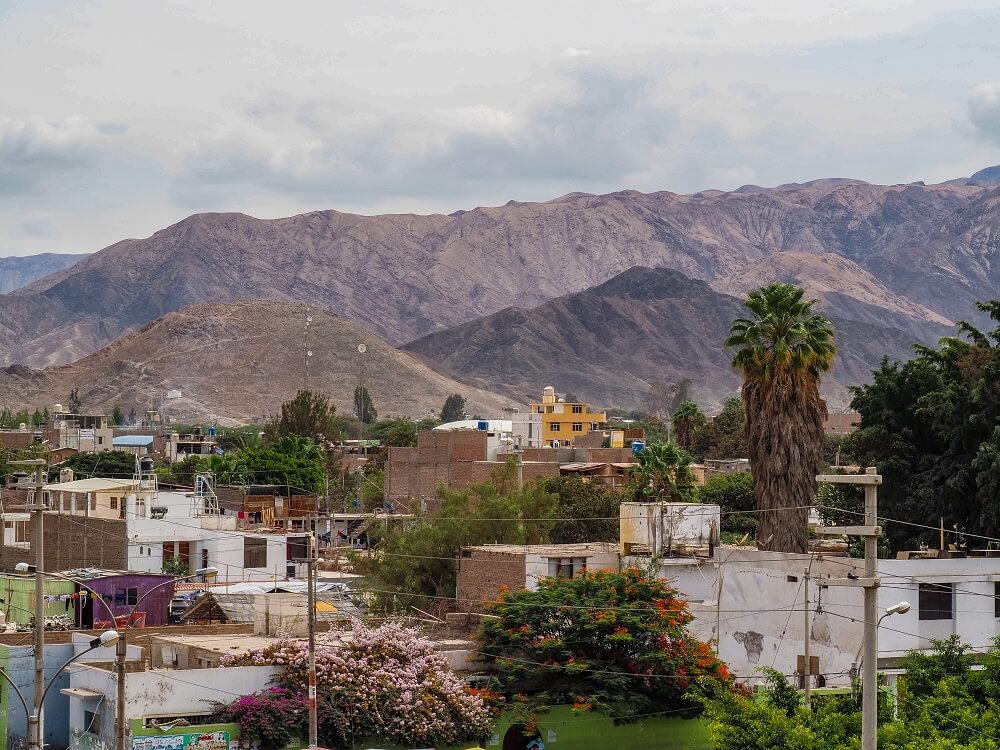
A Brief Overview of Nazca
Nazca is the capital of the Nazca Province and is located in the Ica District. It is one of the most arid areas in the world. Its weather is controlled by the Humboldt Current that cools the air and also limits the accumulation of moisture within the clouds. As a result, there’s only an average annual precipitation of 4 mm in Nazca.
The city’s name comes from the Nazca culture that lived in the area between 100 BC and 800 AD. Many may only know about one of their famous creations: the Nazca Lines. However, they also created underground aqueducts called puquios for the irrigation of water in the arid environment. The culture was definitely influenced by the Paracas culture, and also produced textiles and ceramics.
Did you know? – Nazca and its surroundings were pretty much completely destroyed in a 7.5 magnitude earthquake in 1996. The city was completely rebuilt in about 12 years.
Today, the city is well visited by tourists mainly to see the mysterious Nazca Lines. These lines have been fascinating to many historians and archaeologists over the years. However, to date, there’s still no official explanation of how and why they were created. The lines consists of over 800 straight lines, around 300 geometric figures and an additional 70 animal and plant designs. The most popular figures are the monkey, the hummingbird, the tree, the spider, the condor and the astronaut.
These figures range from 50m to 370m and the lines can run up to nearly 50km (30 miles). The Nazca Lines were declared a UNESCO World Heritage Site in 1994.
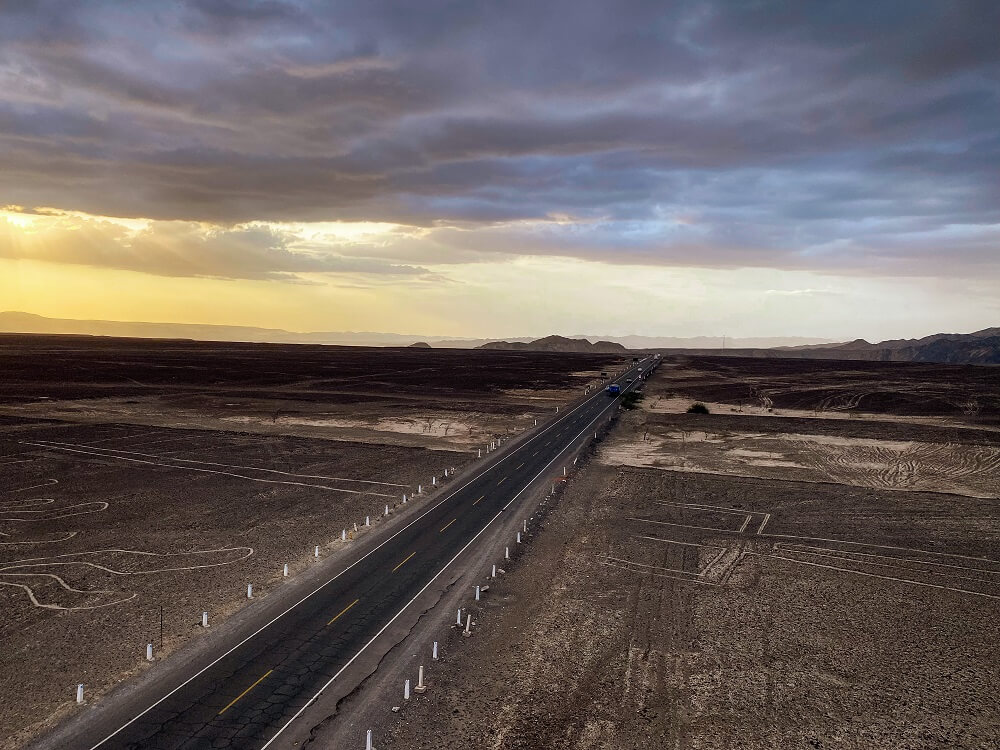
How to Get to Nazca
The city is located about 450km to the south of Lima and about 150km south of Ica. Because of the famous Nazca Lines, the city has become a very popular stop for tourists over the years. Luckily, there are a few bus companies you can choose from depending on your overall Peru itinerary.
Peru Hop – If you’re on a south of Peru tour, then booking a Peru Hop bus pass might be a great option for you. It’s a safe and favoured bus company by many and has many pros which you can read about in our bus guide to Peru. Peru Hop buses normally travel from Lima to Paracas, then to Huacachina. The bus leaves Huacachina the next day around 2:30PM to Nazca. With Peru Hop, from Nazca you can get an overnight bus to either Arequipa or Cusco.
Public Bus – If you’re not travelling with Peru Hop, then you can take a public bus to Nazca too. Bus companies such as Cruz del Sur, Civa or Oltursa provide direct services between Lima and Nazca. The tickets cost anywhere between £20 to £40 ($US 25-50) depending on the time and bus company you pick. It takes between 7 and 8 hours to reach Nazca from Lima. Many of these services stop at places like Paracas or Ica, so you can also hop onto these buses from any of these places. You can buy your ticket online or at the bus station. Note that your bus might leave from a different terminals depending on the bus company.
You can find bus routes and companies operating to and from your next destination on these websites: Busbud.com, and Rome2Rio.
Read our detailed guide on how to travel by bus in Peru.
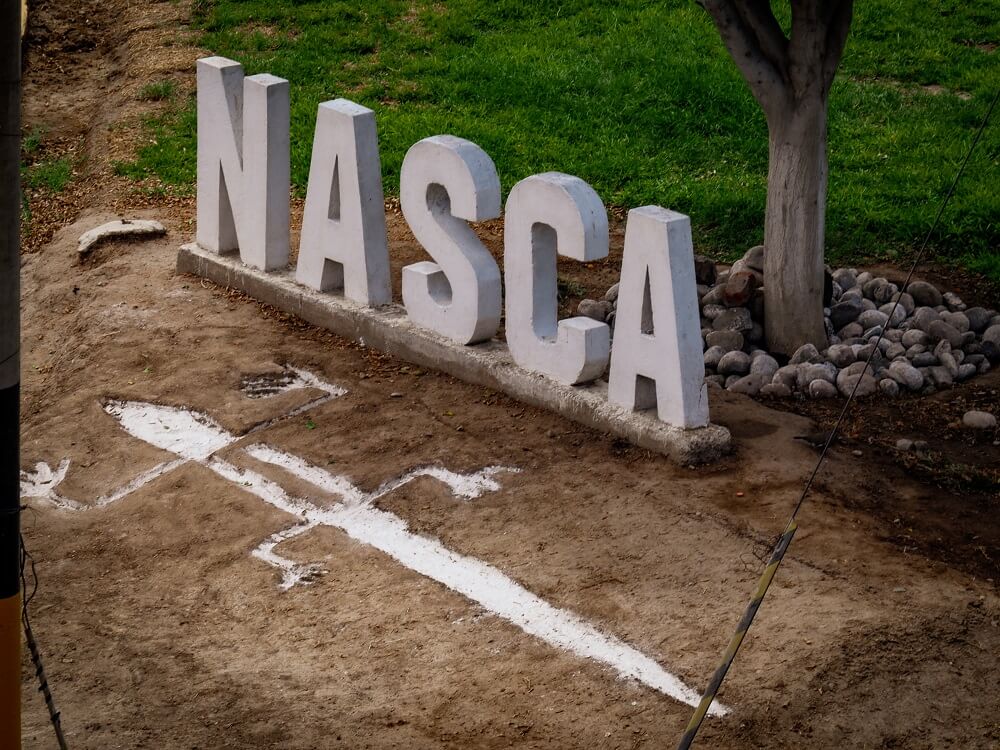
How Long Do You Need in Nazca, Peru
Most travellers either stay one night or head straight to their next stop with an overnight bus without staying in Nazca. To get the most out of Nazca, we recommend staying at least one night.
What can you see in Nazca if you’re short on time?
If you’re on a very tight itinerary, then you probably won’t be able to stay a night in Nazca. In this case, you’ll leave Huacachina (assuming that you’re travelling with Peru Hop) around 2:30PM and would stop at the Nazca Lines Viewing Tower at sunset. You’ll then have time for dinner in the city before boarding a night bus to your next destination. So, you can still view a few of the Nazca Lines but that’s about it. If you really want to do the flight then you can arrange a private shuttle with them leaving Huacachina early in the morning, so you can get to Nazca for your flight leaving around 11AM.
What to do in Nazca if you only have one day?
If you can stay at least one night in the city, it’ll then give you the opportunity to see some of the Nazca Lines on your first night. Then the next morning you can either fly over the lines and go on a tour at one or two of the places we mention below. If you don’t want to do the flight, then you can definitely visit a few more places from our list. By staying a night you can end your visit at the Nazca Planetarium before hopping on a night bus to your next stop.
Are you a slow traveller?
If so, then we recommend staying at least two nights in Nazca. That way you can stop at the viewing tower upon arrival, then fly over the Nazca Lines the next morning. After that, you can definitely go on a tour to visit any of the places we detail below. On your last day, you’ll have a full day before your night bus to arrange a tour to other places from our list.

Best Things to Do in Nazca, Peru
Please note that due to time constraints, closures (and our poor planning) we didn’t have a chance to visit all the sites we wanted. However, we summarised all the places that were on our wish list and that you should consider visiting in Nazca. It will definitely give you the opportunity to learn more about the Nazca culture, and see something different than just the Nazca Lines.
Top Tip – We created a Google map, which shows that many of the sites are far away from each other. Unless you have your own vehicle you can only reach them by taxi or tour. We believe that taking tours might be the best option since they normally include a visit to two or more sites. Plus, you’ll be able to learn a lot from your guide and go away with a lot more knowledge on this area of Peru.
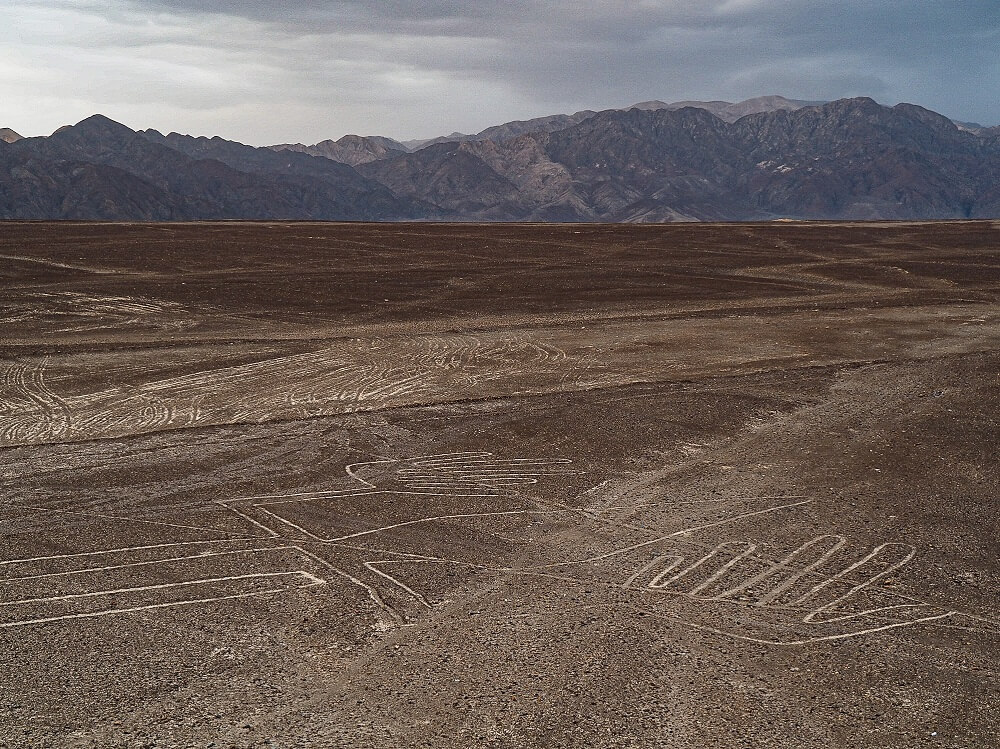
1. Fly Over the Nazca Lines
The Nazca Lines are best viewed from above. From the sky you’ll be able to truly appreciate the scale and the size of these mysterious geoglyphs. Depending on your plane’s exact route you’ll be able to spot the Monkey, the Whale, the Spider, the Compass, the Condor, the Astronaut and so on.
Practical information about the flights – The flights normally last around 30 minutes and cost around $US90 to $US100 per person. You’ll also have to pay a S/. 30 airport tax and around a S/. 50 Nazca Lines Tourist Ticket in cash. Planes depart in the morning because it’s normally less windy. Although cancellations due to bad weather can happen. You must take your original passport with you.
Now, there are many tour companies offering flights over the lines. We highly recommend you choose a reputable company. Since it’s a popular activity to do, we recommend reserving a seat with a good company in plenty of time. Many years ago, safety regulations weren’t as strict as they are today. However, the companies that operate flights now will go through a lot more rigorous testing, training and maintenance.
Note – You’ll be in a tiny aircraft so everyone will get a window seat. The pilot will definitely manoeuvre enough so everyone can have great views of the figures. This, plus the fact that you’re flying through a valley in a tiny plane, usually causes some motion sickness even in people less prone to it. So make sure that you’re prepared for anything and maybe have your breakfast after the flight otherwise you won’t have a great time in the air.
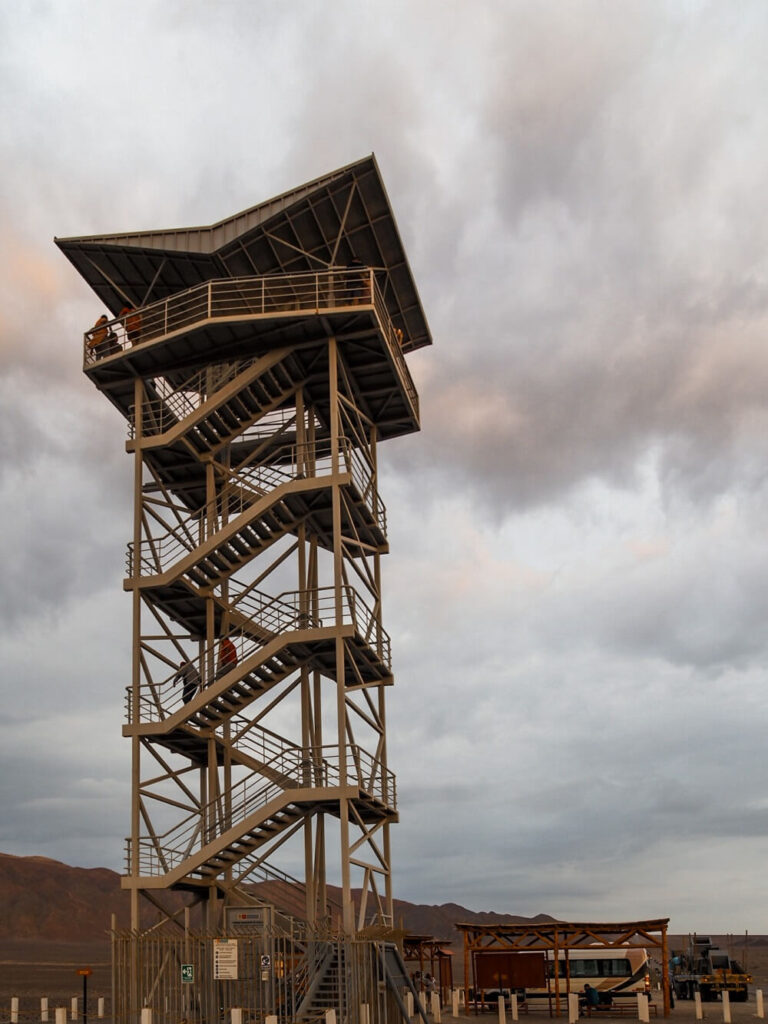
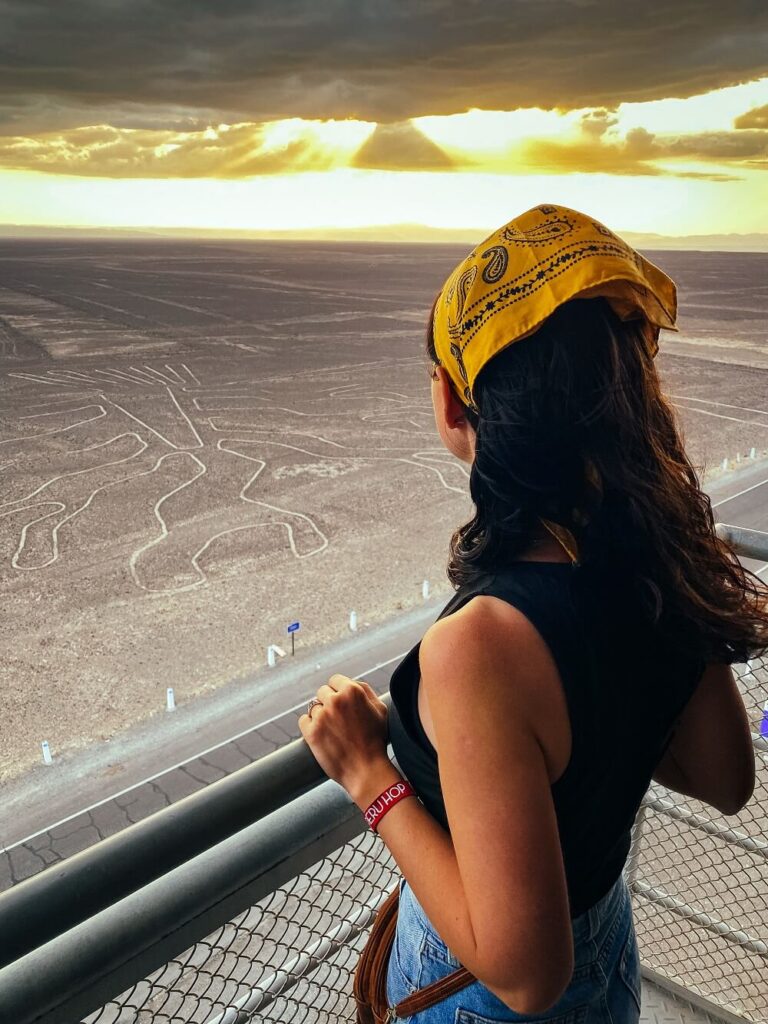
2. See the Nazca Lines from the Observation Tower
If you’re afraid of flying or suffer from serious motion sickness and can’t go on a flight tour, you can still get the chance to see three of the popular lines. About 25 km to the northwest of Nazca is an Observation Tower alongside the Panamericana Sur highway.
The tower is around 13 m (43 feet) high, just enough to see the outline of three of the Nazca figures: the tree, the hands and the lizard. It’s crazy, but if you didn’t know that these figures were there you could easily drive past them as they aren’t visible from the ground. As soon as you start going up the stairs you will immediately start to see some of the figures. You’ll see that the lizard is actually cut in half by the highway.
We were very happy to be able to see a few of the lines even if it wasn’t anywhere near as impressive as it would’ve been from a flight. On the contrary, we could observe the lines much closer than from the plane. Your photos won’t be as impressive as from a plane, but it’ll be a much more up-close-and-personal way to see the lines.
Admission fee is only S/.6 per person ($US 1.50 / £1). You can get there via a tour, a private taxi or a colectivo.
Note – If you’re exploring the south of Peru with Peru Hop, then the Viewing Tower is included in your bus pass. You’ll get to the tower just before sunset and your guide will tell you more about the ancient Nazca Lines.
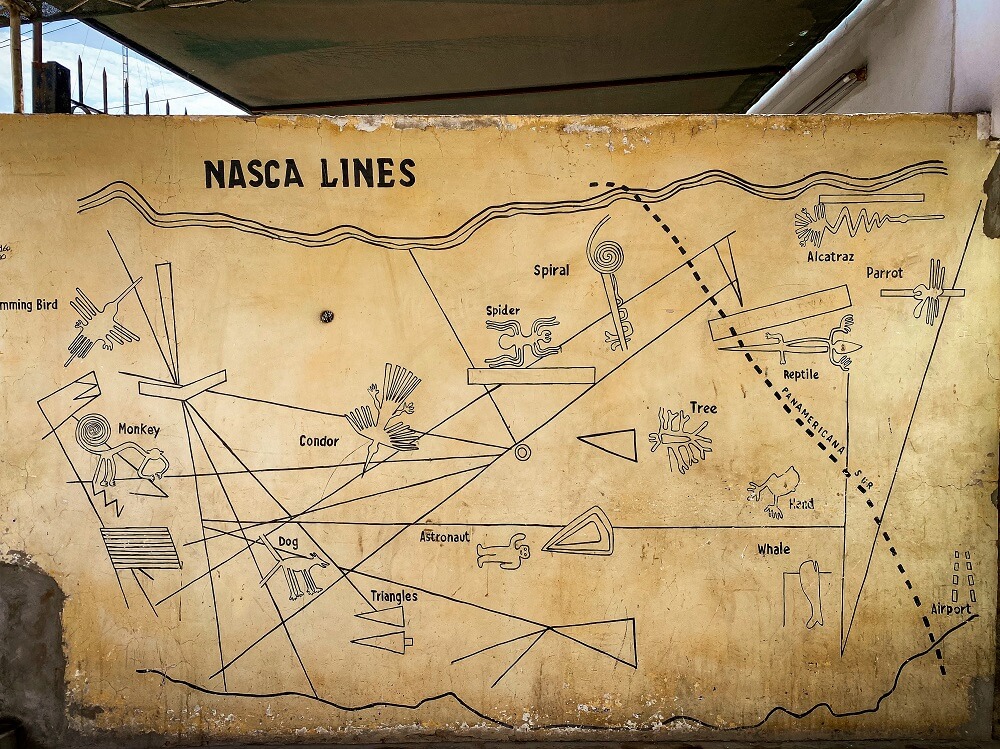
3. Visit Antonini Archaeological Museum (Museo Antonini)
If you’d like to learn a bit more about the Nazca culture, then definitely head over to Antonini Museum. Luckily, it’s located only a 15 minute walk away from the Plaza de Armas, so you don’t need to arrange private transportation.
In the small museum, you’ll see hundreds of artefacts, pottery and textiles. There’s a room dedicated to human skulls and mummies that were found in Cahuachi. Of course, there will be some more information about the Nazca Lines too, including a scale model of the Nazca Lines within their outdoor section. Whilst the museum is informative, everything will be in Spanish. However, you can either ask for a guide book in English or join a guided tour that includes the museum. The entry fee is around S/.20 ($US5.50 / £4.50) per person.
4. Learn About the Cantalloc Aqueducts (Acueductos de Cantalloc)
The Nazca culture constructed an extensive system of underground aqueducts, tunnels and spiralling holes (ojos) so they could distribute water in the arid environment. This hydraulic system is called puquios and allowed people to have enough drinking water and also be able to water agricultural land.
There are more than 30 functioning puquios in the Nazca area. The most popular one to visit is the Cantalloc Aqueducts where you can see surface channels, underground aqueducts and ojos.
Entry fee is around S/.10 ($US3 / £2) per person. Again, we recommend opting for a guided tour that will tell you more about how they used the system and were able to flourish in an area where droughts can last for years.
Top Tip – If you’re flying over the Nazca Lines, you can pick a slightly longer flight that flies over the aqueducts.
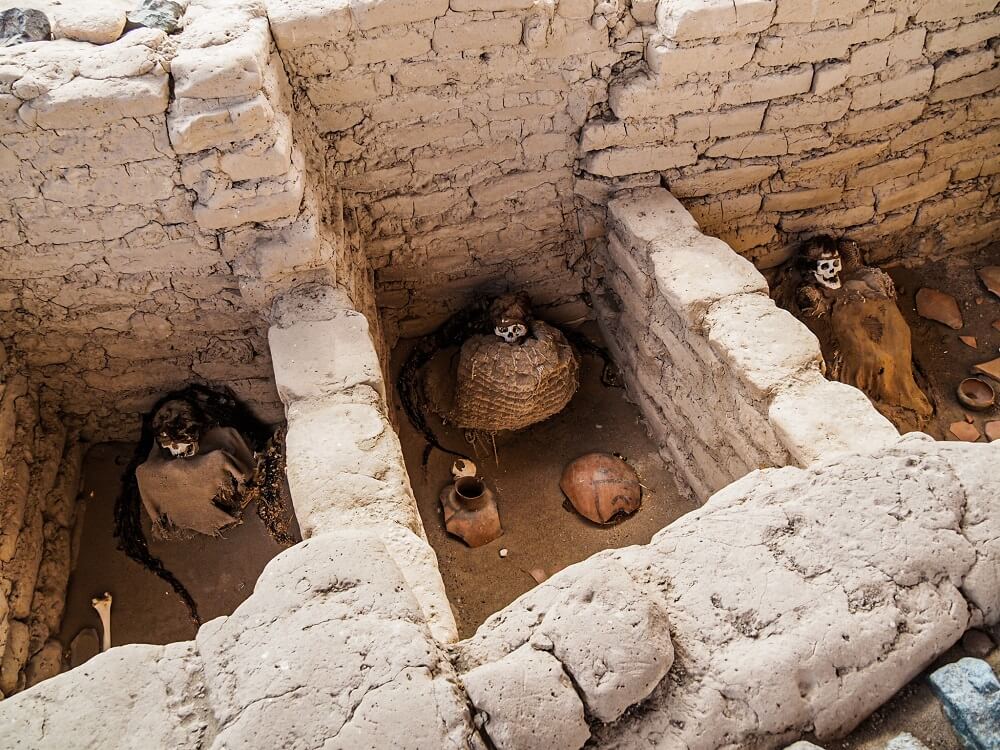
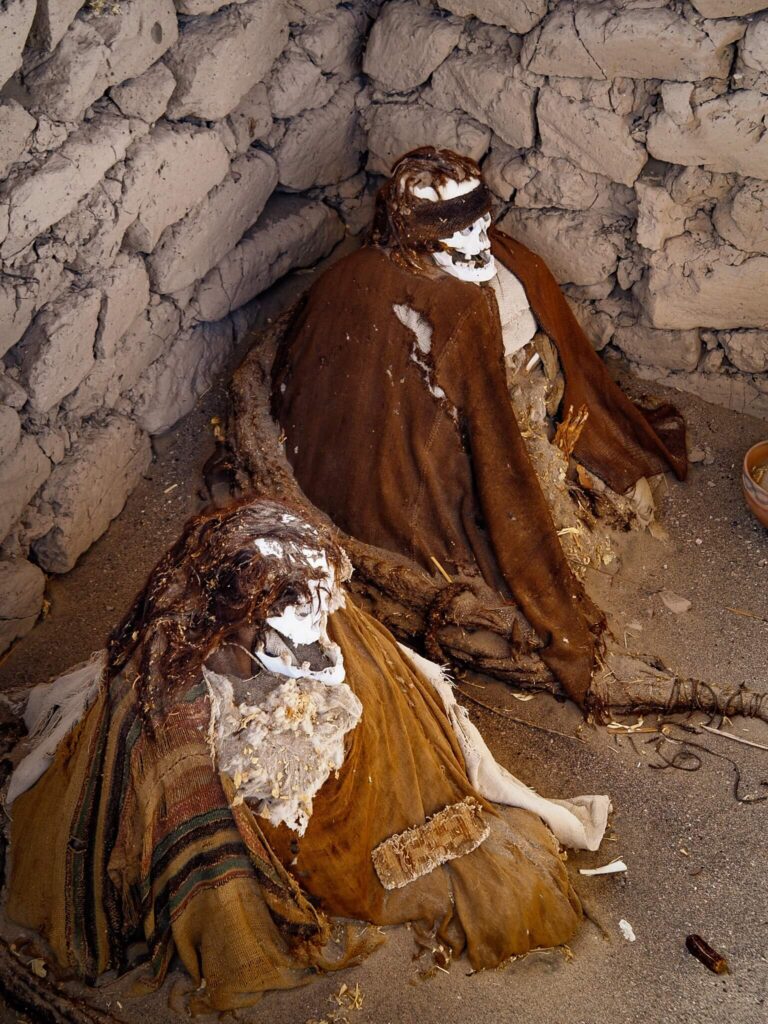
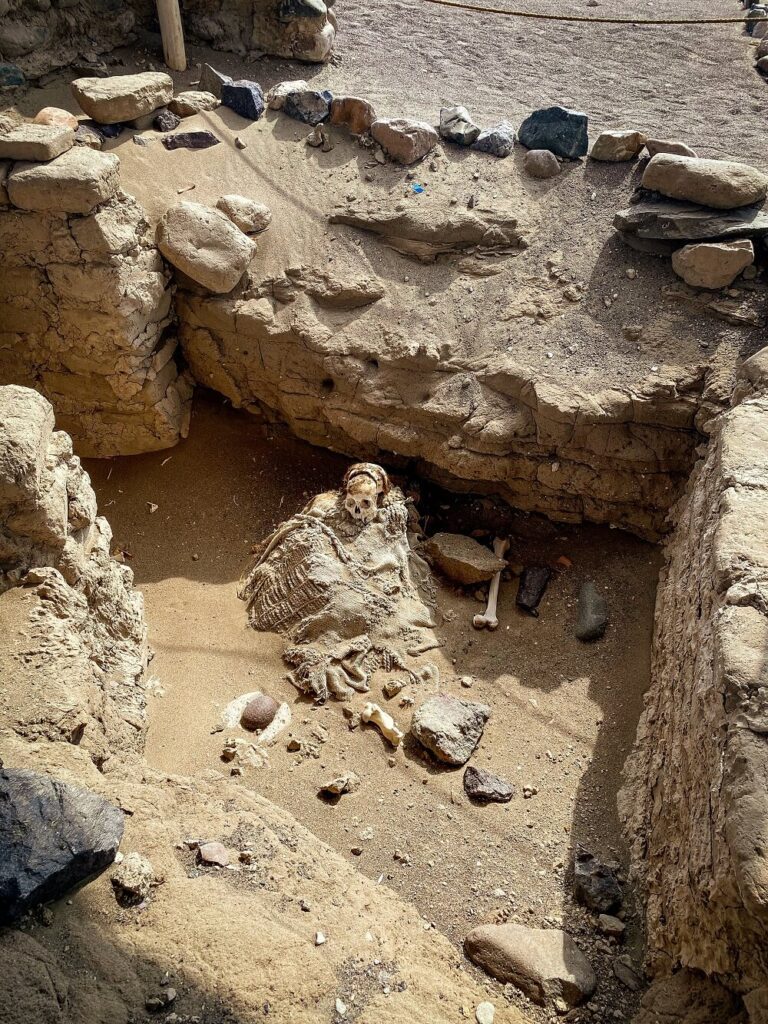
5. Take a Tour of Chauchilla Cemetery (Cementerio Chauchilla)
Chauchilla Cemetery is a burial ground of mummies that were buried there up until the 9th century. Unfortunately, until 1997, grave robbers did a lot of damage and stole everything valuable that they found. Since then the cemetery has been protected.
What’s really unique about this cemetery is that the mummies you’ll see are still in their original tombs. This is quite rare in Peru. As you walk around, you’ll also notice that the human remains are very well-preserved. Many even have their original hair! This is due to the desert climate and of course other burial practices. It’s still pretty unique to see something like this so if you can only pick one place to visit, we recommend Chauchilla Cemetery.
How to visit Chauchilla Cemetery? It is located about 30km to the south of Nazca, so you either need to get a taxi or hire a guide. We highly recommend hiring a guide to visit this site. There are no signs in any language, so a guide will be able to tell you all about the culture, burial procedures and a bit more history on Nazca. A guided tour costs around $20 per person and can include a visit to other places such as a textile and ceramics workshop.
Note – The site is pretty barren and there’s no protection against wind and dust. Wear sunglasses and sun cream for protection. Although the cemetery is protected now, it definitely deserves a bit more care. Since you can visit it on your own and there are no guards watching you, our guide told us that many people jump in the tombs to take photos with the mummies. Please don’t do this!
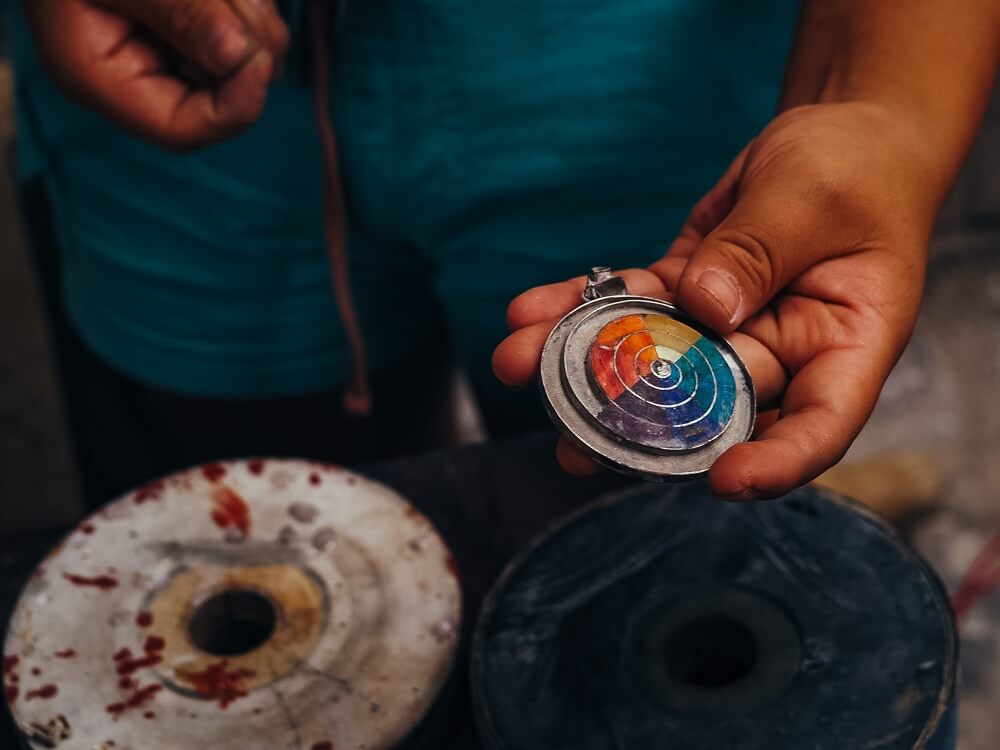


6. Visit a Textile and Ceramics Workshop / Museum
Apart from the Nazca Lines and the underground aqueduct system, the Nazca people are also famous for their colourful textiles and pottery. Just like any other Pre-Columbian societies in South America, the Nazca culture didn’t have a writing system either. So the symbols on their ceramics and textiles served as a means of communication.
You can definitely see some beautiful examples on display in Antonini Museum. However, if you visit one of the ceramics and textile workshops in Nazca, you’ll have the chance to see and learn more about the technique used to make these products. You’ll also learn all about the natural ingredients they use in the dyeing process to create all the different colours. Plus, you’ll be able to purchase some of the handmade products.
7. See an Incan Ruin: Los Paredones ‘The Walls’ Archaeological Site
Located just outside of Nazca is the archaeological site of Los Paredones. It was actually an Inca administrative centre and was built in the 1400s.
Apparently this site was used to monitor passage between the mountains and the coast. The site was clearly built with typical Inca planning and architectural techniques. It includes a central plaza, and different buildings for administrative, ceremonial, and residential purposes. The use of adobes and stone walls is rarely seen along the coast. However, you’ll see more as you visit many more Incan ruins.
Although it won’t be the most impressive Incan site you’ll see in Peru, it’s an interesting one to add to your Nazca itinerary. The entry fee is around S/.10 ($US3 / £2) per person.
8. Take a Tour Around Cahuachi
Located about 25km to the north-west of Nazca is Cahuachi. It used to be the largest, and one of the most important, ceremonial and religious centres of the Nazca culture. The site operated as a pilgrimage centre with its population fluctuating depending on ceremonial events. Unfortunately, just like at Chauchilla cemetery, looters have robbed many valuables from this site over the decades.
Cahuachi consists of about 40 mounds with adobe structures. Researchers suggest that these mounds were natural hills and were modified to build adobe pyramids on them. The largest pyramid is about 150m long and 28m tall. So, compared to other stone pyramids like Teotihuacan or Monte Alban in Mexico, it won’t be as impressive. Although there will be a lot less tourists, so you’re definitely guaranteed a peaceful visit. Note that there will be no English signs to provide a little context if you go on your own. For this reason, we recommend joining a guided tour if you really want to know more about Cahuachi.
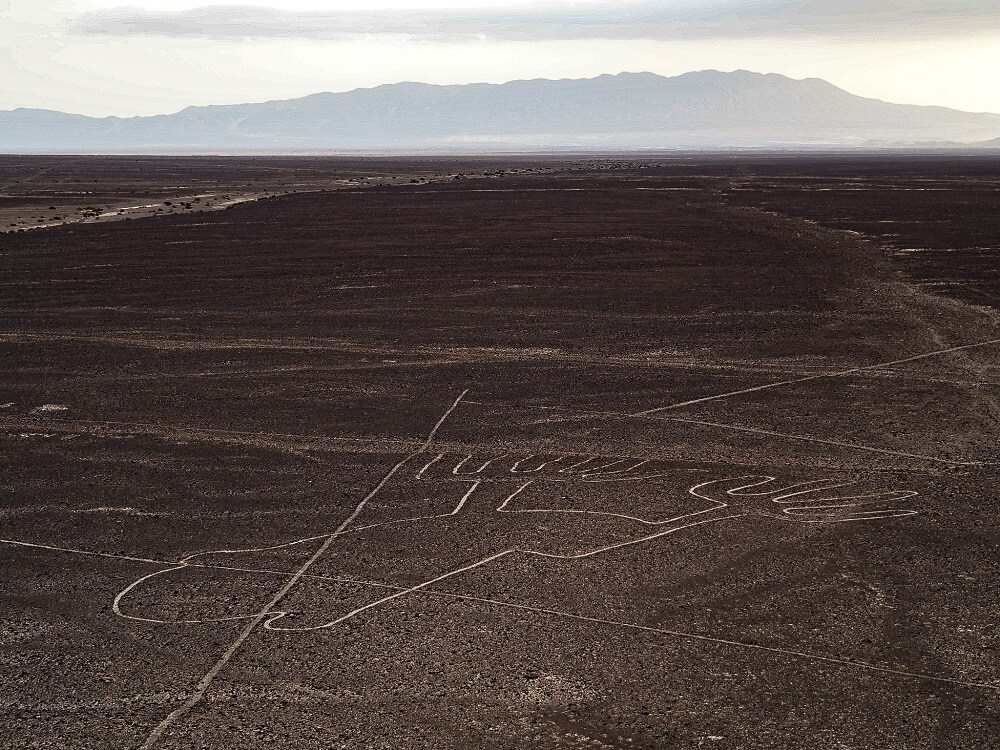
9. Visit Maria Reiche Museum
You may or may not know but Dr. Maria Reiche, a German mathematician, and her colleague, Professor Paul Kosok, were some of the first European and North American scientists to study the Nazca Lines. After flying over the lines, Reiche published her theory that the lines might be astronomical calendars. Whilst this has been disproved, her studies definitely helped to increase the significance of the site for others which eventually led to the lines becoming a UNESCO World Heritage Site.
After she passed away in 1998 her house was turned into a museum, located around 28km to the north of Nazca. Just like many other sites in Nazca, there isn’t a ton of information provided in the museum. However, it has preserved many of the maps, diagrams, photographs and artefacts that she collected over the years. You’ll even see some skulls and a tattooed sacrificial mummy.
Since it’s quite far from Nazca you can visit the site via a colectivo, a private taxi or as part of a tour. Since the Observation Tower is located close by, many tours combine the two attractions.
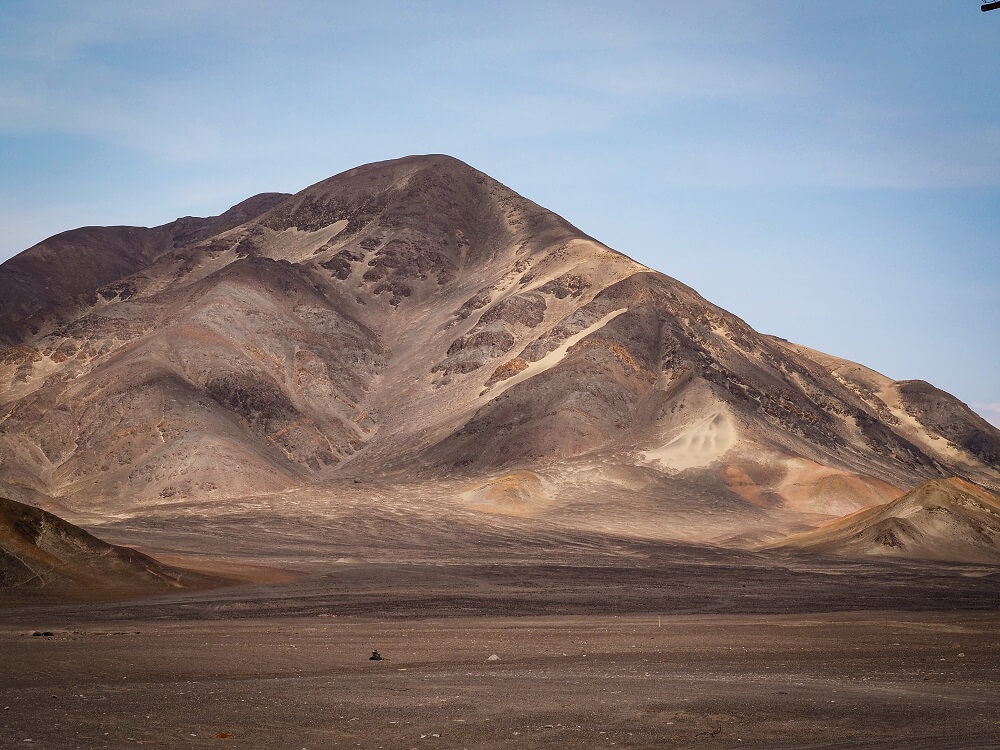
10. Climb Up and Sandboard Down Cerro Blanco
If you enjoyed your time in Huacachina, the desert oasis of Peru, then you can consider sandboarding down the highest sand dune in Peru: Cerro Blanco. Sitting at 2,078m (6,820 ft) above sea level, it is also one of the highest in the world. Even from base to peak it has a height of 1,176 m (3,860 ft). That’s pretty impressive considering that Ben Nevis – the highest point in the UK – is 1,345 m (4,411 ft) above sea level.
This activity is definitely not for the faint hearted. You’ll have to go on a 3-hour hike in the sand to reach the top. This might sound easy, but hiking in sand is rather exhausting and challenging. Once you’re on the top though you’ll be greeted with some incredible views of the surrounding area. Then you can start your adrenalin rushing adventure and sandboard down Cerro Blanco sand dune.
11. End Your Visit at the Nazca Planetarium
If you’d like to learn more about the Nazca Lines, then definitely head to one of the night shows at the Nazca Planetarium. During your visit you’ll see the stars, moon, and planets through telescopes while also getting an interesting perspective on the Nazca Lines.
It’ll be the perfect way to wrap up all you’ve learnt about the Nazca culture and Nazca Lines during your stay.
Entry fee is around S/.20 per person that you have to pay at the hotel’s reception. The evening shows are in 3 languages, Spanish, English and French. The English one starts at 7:30PM. It’s close to the Cruz del Sur Terminal, so the perfect activity to do just before your night bus leaves to your next destination.
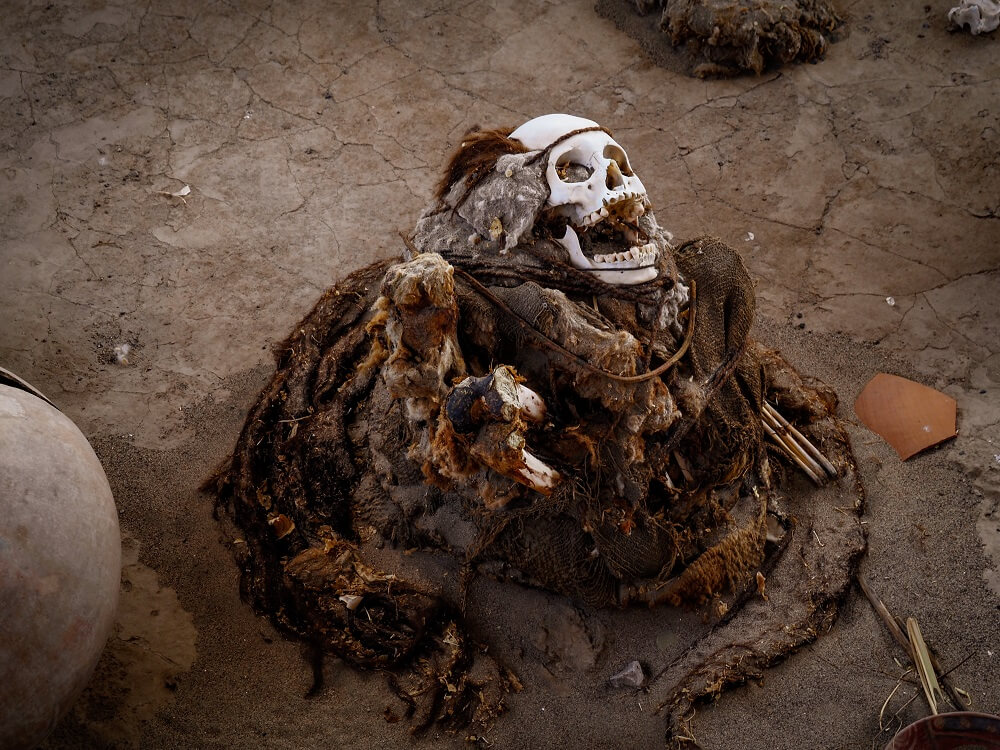
Final Thoughts on Things to Do in Nazca, Peru
As you can see, there are so many places scattered around Nazca to visit after you’ve seen the Nazca Lines. If you just want to learn more about the Nazca Lines then definitely visit Maria Reiche and Antonini Museums and the Planetarium. However, if you’re interested in learning more about the Nazca culture then first head to Antonini Museum. Then make sure to visit some of the amazing sites they created such as the Cantalloc Aqueducts or the Chauchilla Cemetery. If you fancy seeing or doing something different, then visit a textile and ceramics workshop, an Incan site or head to some of the highest sand dunes in the world.
Have you ever been to Nazca before? If so, how much of the area did you see? If not, which place would you add to your list other than the Nazca Lines? Let me know in the comments below.
Now, let your adventure begin,

Our Top Travel Resources
Accommodation: For hotels we always use Booking.com and Hostelworld for hostels. We also book longer stays on Airbnb or Vrbo.
Flights: To find the best flight prices we always check Skyscanner, Google Flights or WayAway. Then we also check the airlines’ websites too for comparison.
Car Rentals: We use Discover Cars when we want to rent a car as it compares local, national and international companies.
Activities: If we book organised tours we always check either GetYourGuide or Viator.
Foreign Currency: Whenever we can we prefer to pay in local currency and for that we always use our Wise card. We can easily withdraw money from the ATM or pay by card at most shops and restaurants.
Travel Insurance: We never go anywhere without travel insurance. You never know what will happen on your trip, so good travel insurance like SafetyWing can protect you in case of injury, illness, theft and cancellations.
eSIM and VPN: To get data abroad we use Airalo which is an app that allows you to download a prepaid eSIM to your phone in over 190 countries. Make sure to have a VPN to avoid hackers accessing your personal data when using public WIFI. We use Surfshark which is the only VPN that offers one account on unlimited devices.
Remember…It all starts with a Pin…
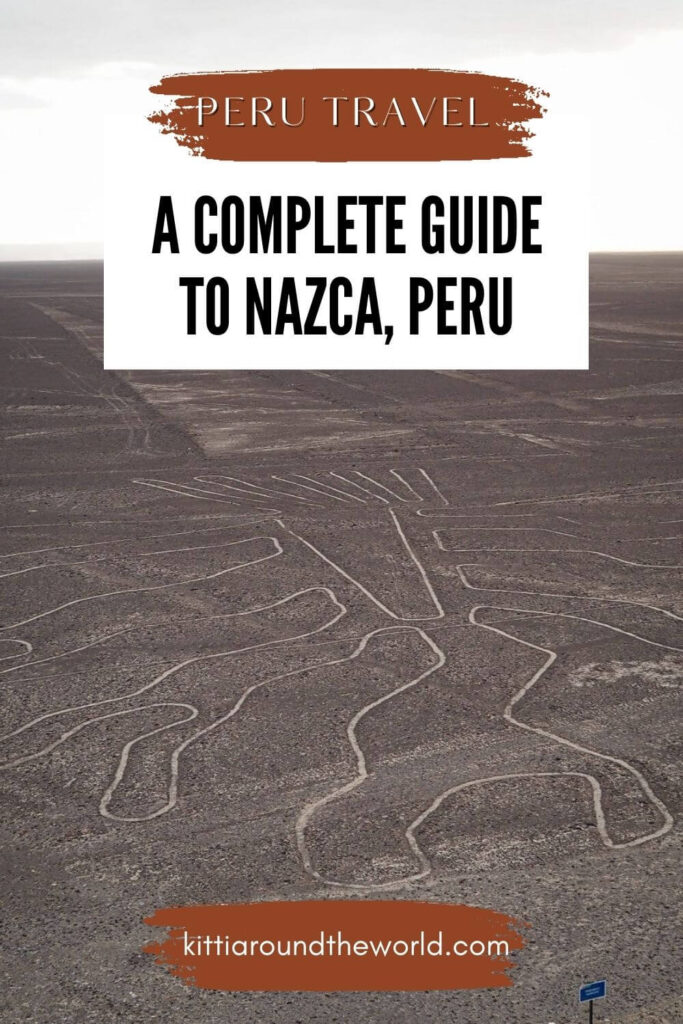
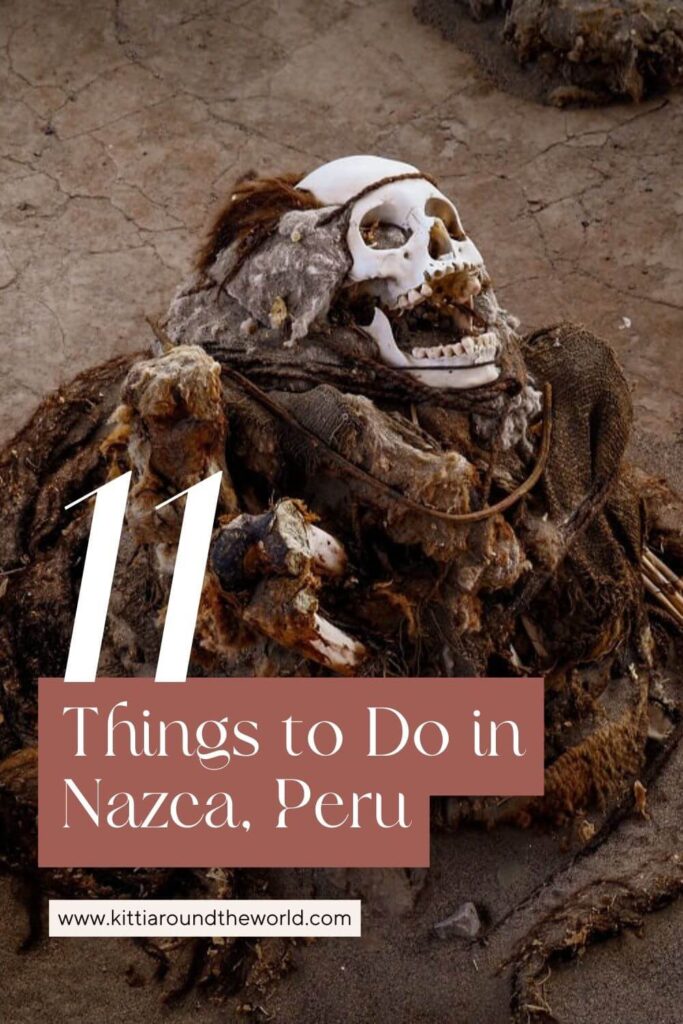

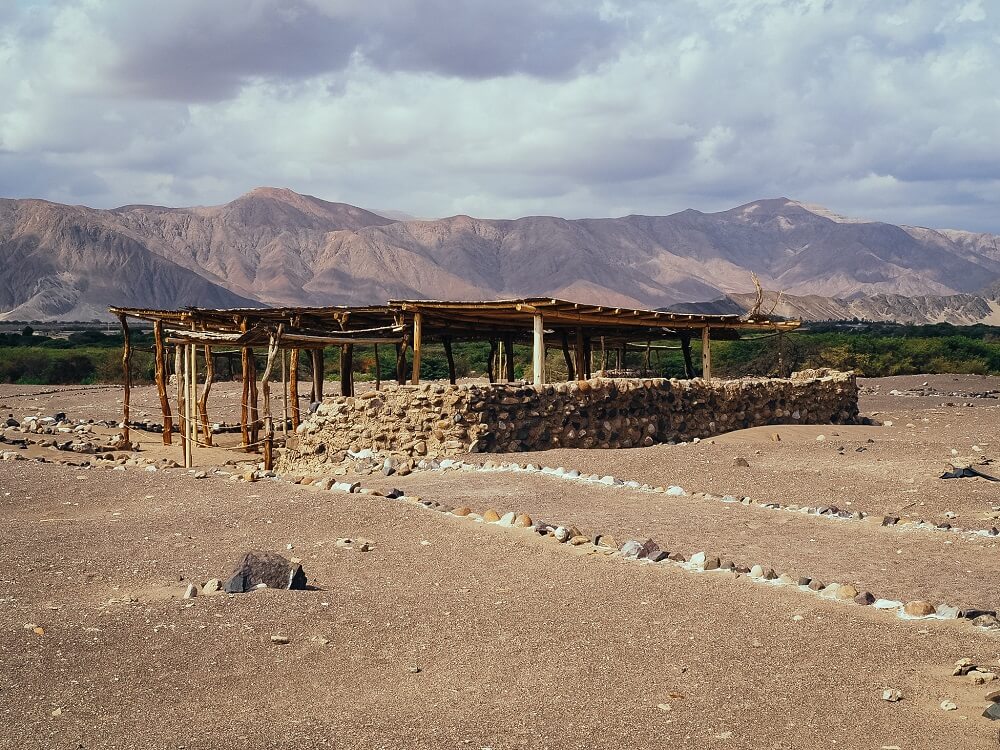

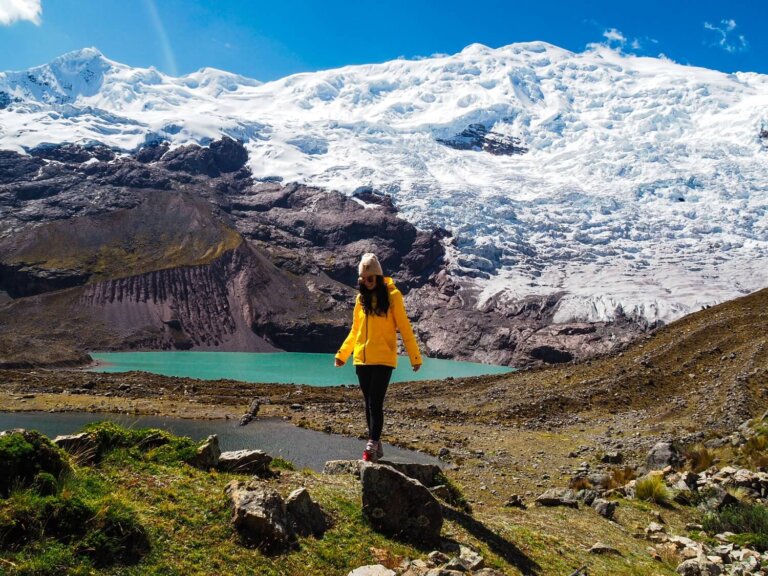
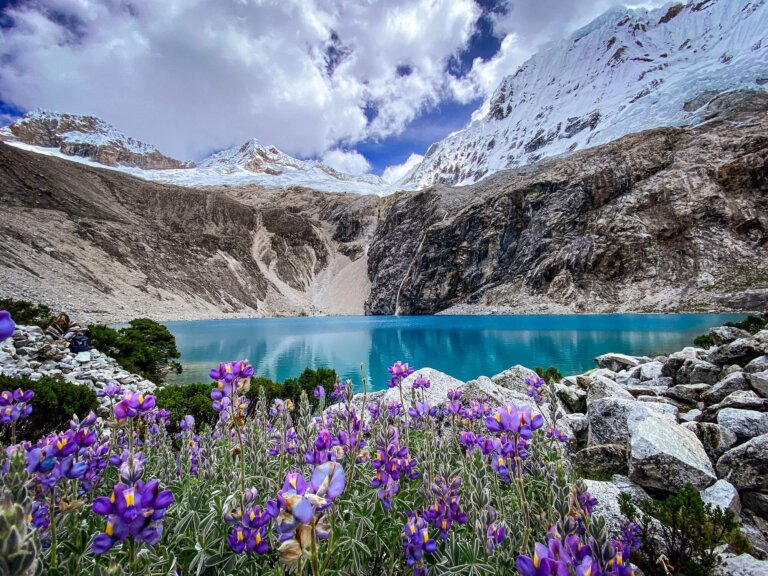
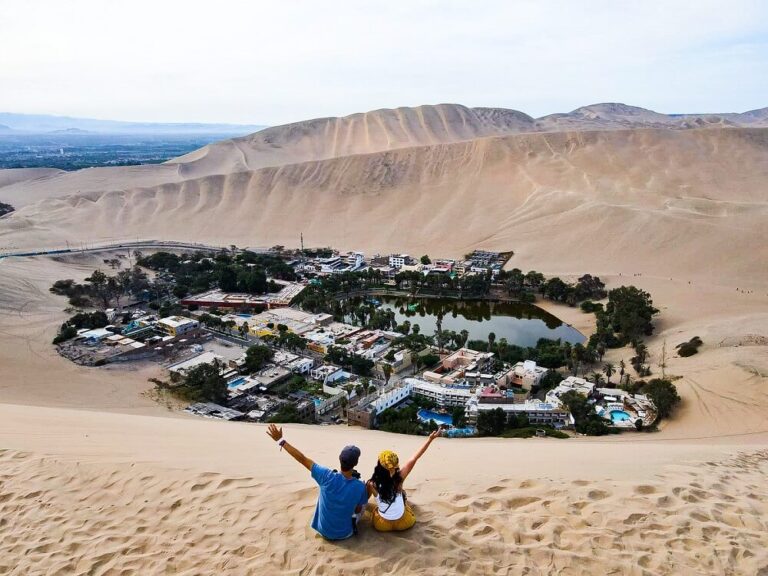
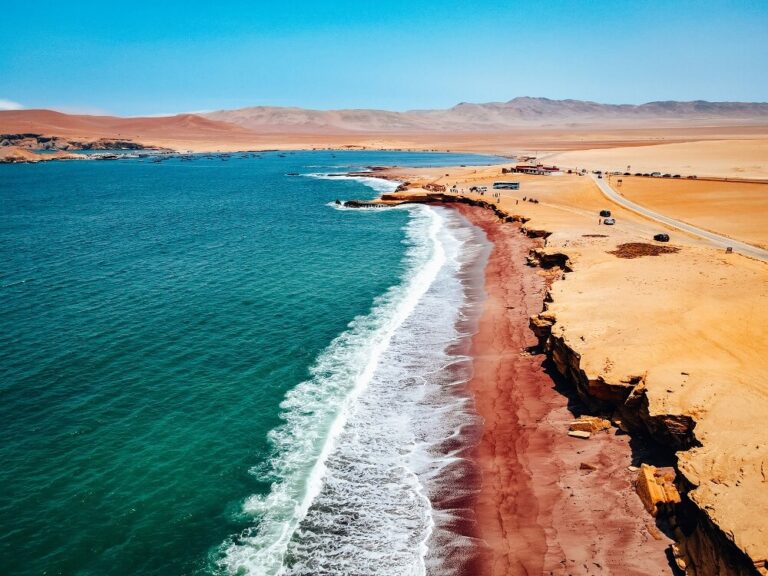
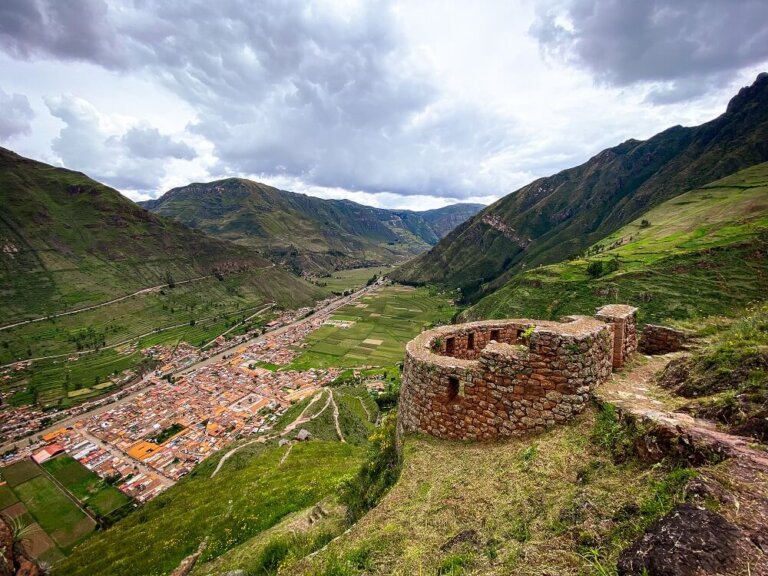
This area is so enigmatic and mysterious. So interesting to see the photos from the lookout, and to read about the culture of these ancient people. Sounds like there are lots of ways to learn more about them too.
Thank you Karan, we didn’t realise just how much there is to learn in Nazca before our visit. It’s definitely a place packed with history and mystery.